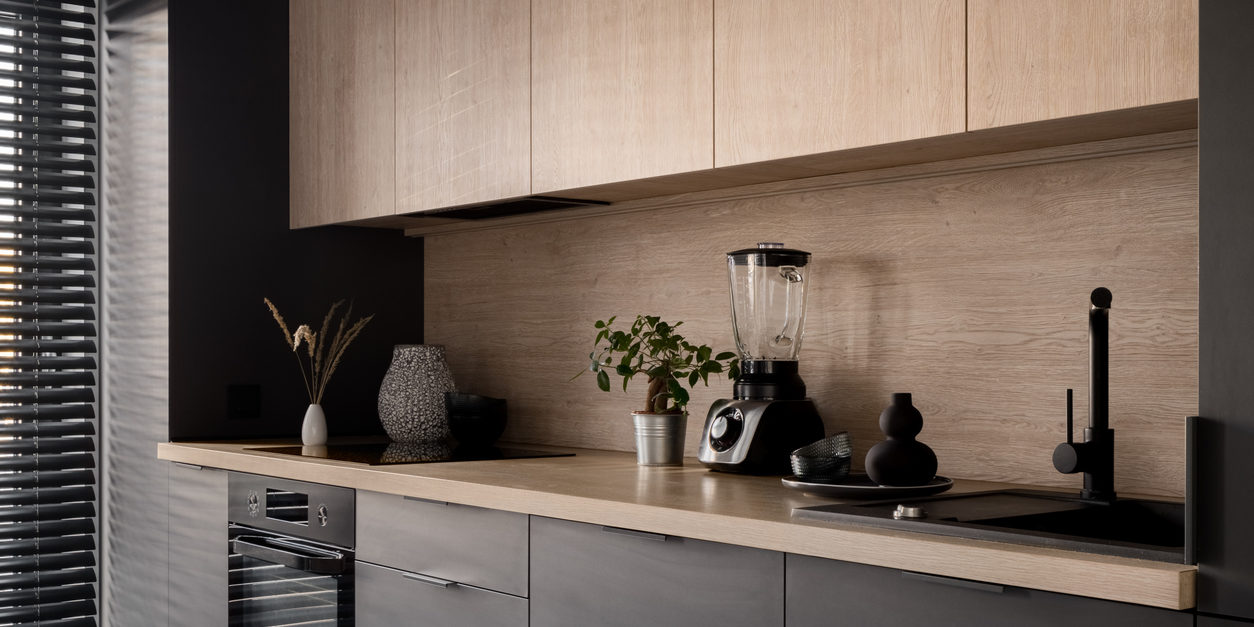Microliving as a Response to a Real Need
The way we live and conceive our homes is changing, and more and more people are opting for compact homes that suit their lifestyle without sacrificing comfort or character. This way of living, defined by smaller, more dynamic and sustainable spaces, has given rise to trends such as microliving — a concept that goes far beyond simply “living in a small space”. It’s about living smartly, combining design, functionality and efficiency.
In this context, where microliving offers solutions that combine functionality, space optimisation and style, the kitchen — the heart of the home — takes on a renewed approach to meet the demands of more efficient and versatile spaces. For this reason, the Silestone Institute shares the keys to designing a microliving kitchen — perfect for the present and ready for the future.
A Functional and Stylish Microliving Kitchen
The secret to a microliving kitchen lies in incorporating versatile elements that make the most of every square metre. Some of the must-haves to achieve this include:
- 45 cm dishwashers, ideal for small households without compromising on functionality.
- Washer-dryer combos, a practical two-in-one solution that saves space.
- Compact or integrated extractor hoods, which optimise both space and functionality.
- Small or single-door fridges, taking up less room and using less energy.
- 45 cm gourmet hobs, perfect for cooking comfortably in reduced spaces.
- Appliances in neutral tones, which help visually enlarge the space.
Advantages of Embracing Microliving in the Kitchen
Beyond saving space, microliving offers numerous benefits that make it a smart and timely choice:
- Multifunctional appliances: By combining several features in a single unit — such as ovens with microwave functions or washer-dryer combos — not only is physical space freed up, but daily routines are also simplified.
- Energy efficiency: Compact appliances, like 45 cm dishwashers or single-door fridges, are designed to consume less while still delivering great performance, leading to cost savings and a lower environmental impact.
- Simplified maintenance: With fewer elements and surfaces, keeping the kitchen clean and tidy requires less time and effort.
- Smart design: Microliving encourages creativity in interior design, promoting innovative and personalised solutions that combine style, ergonomics, and practicality in small spaces.
- Cost reduction: Choosing more compact homes represents a more affordable initial investment, with lower maintenance and utility costs — making urban living more accessible without breaking the budget.
- Total flexibility: Lightweight, compact appliances not only save space but also adapt easily to different environments and routines. Their portability allows them to be installed wherever most convenient and even relocated as needs change.
- Organised aesthetics: Integrated appliances with discreet designs help create clutter-free spaces, visually calm and open environments that enhance a sense of order and well-being.
Microliving isn’t just a passing trend — it’s a real response to the needs of today’s society. At the Silestone Institute, we continue to support spaces that combine design, sustainability, and functionality. Because living better doesn’t always mean living in more space — it means living more intelligently.
